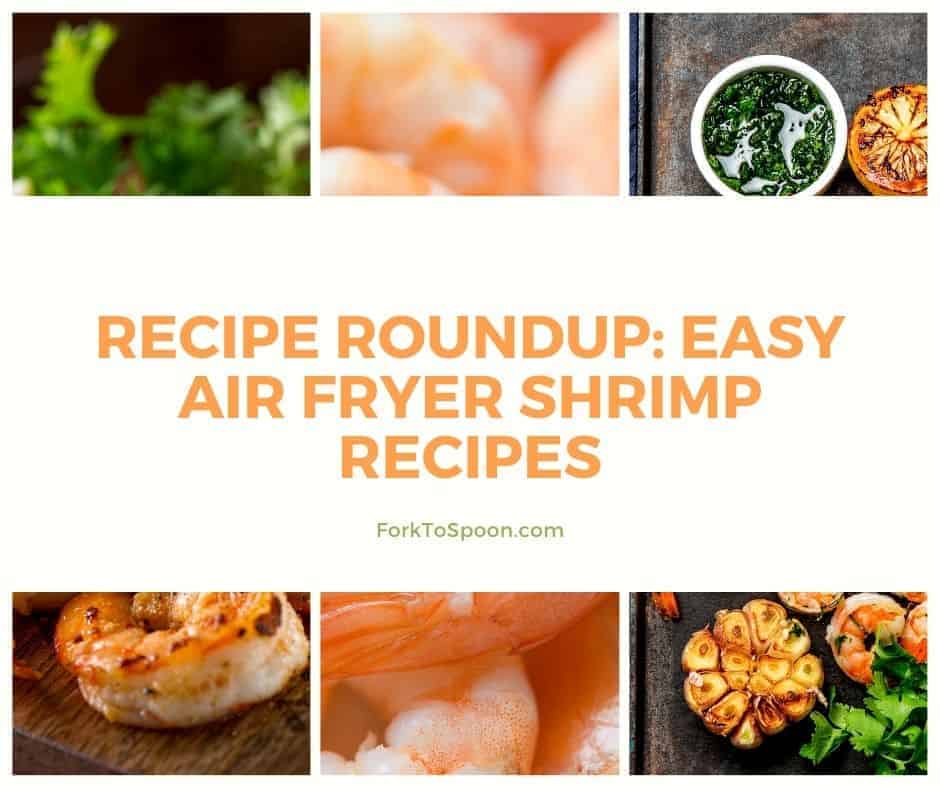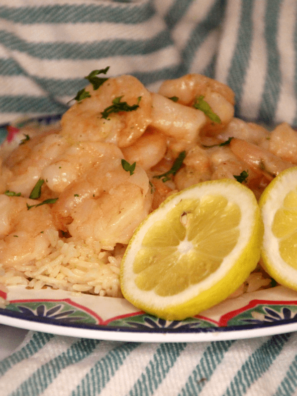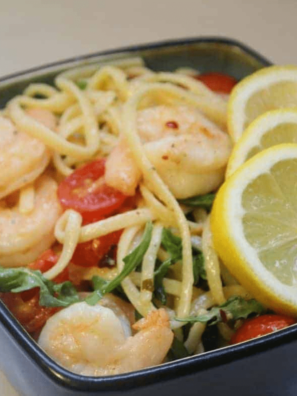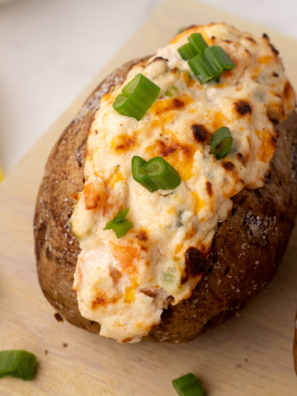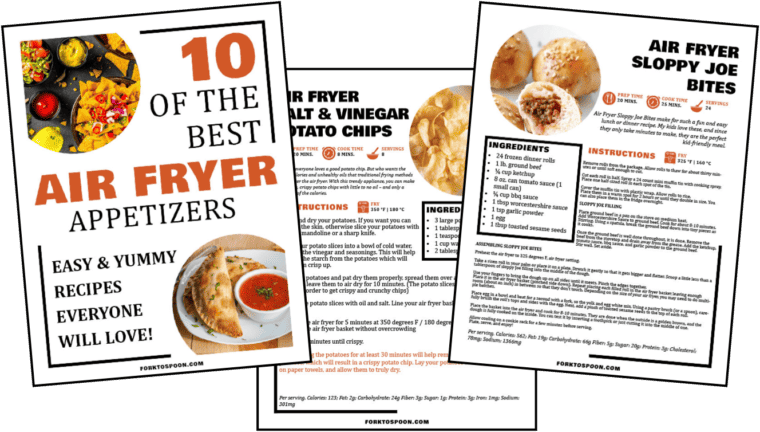Air Fryer Baked Shrimp Scampi is a great dish that is amazing, and you can bake it directly in the Air Fryer!
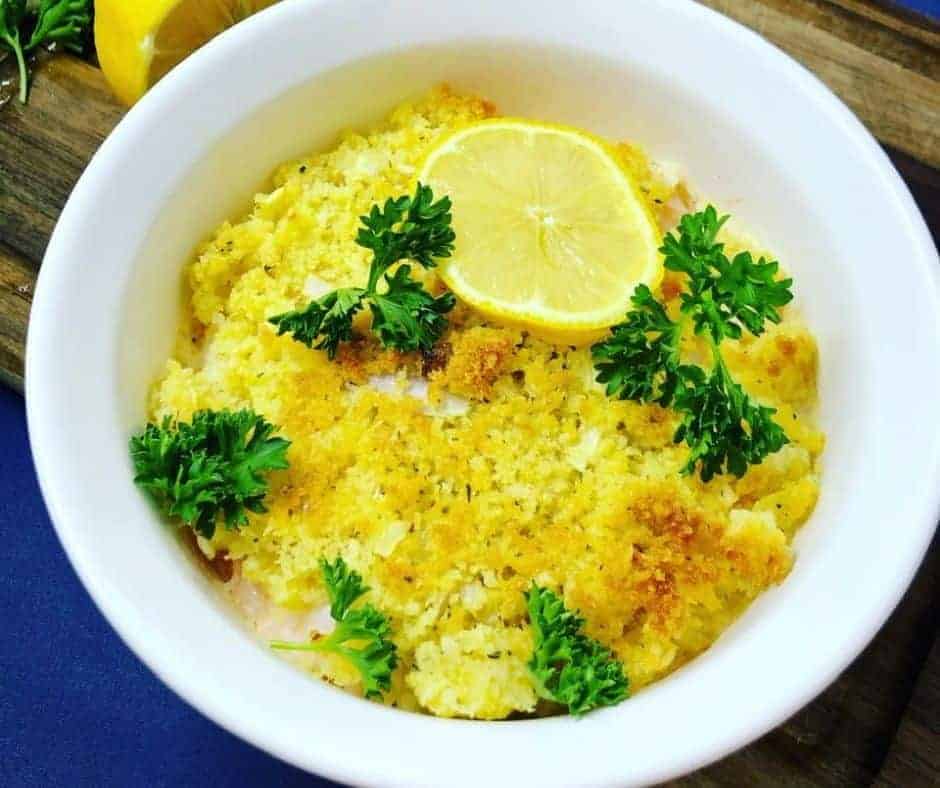
There is nothing better than a baked seafood dish, with the crispy panko on top and the tender and flavorful shrimp in the dish!
Surrounding by goodness, this seafood dish will really elevate your air fryer game to perfection!
If you are looking for even more Air Fryer Seafood Dishes, some of my favorites are AIR FRYER LEMON GARLIC HERB SALMON, AIR FRYER, THE BEST GIANT COLOSSAL GARLIC, AND LEMON SHRIMP RECIPE!, and AIR FRYER CRISPY TILAPIA FISH.
What is Baked Shrimp Scampi?
This is an amazing shrimp dish, made with shrimp, butter, garlic, and then cheese, and it’s baked all together like a casserole.
The iconic part about a baked shrimp scampi is the topping, which is either panko or bread crumbs, baked until crisped up.
Today, I made this dish in the air fryer, and it was amazing. The shrimp was tender, while the coating was crispy and buttery!
Ingredients Needed For Air Fryer Shrimp Scampi Casserole
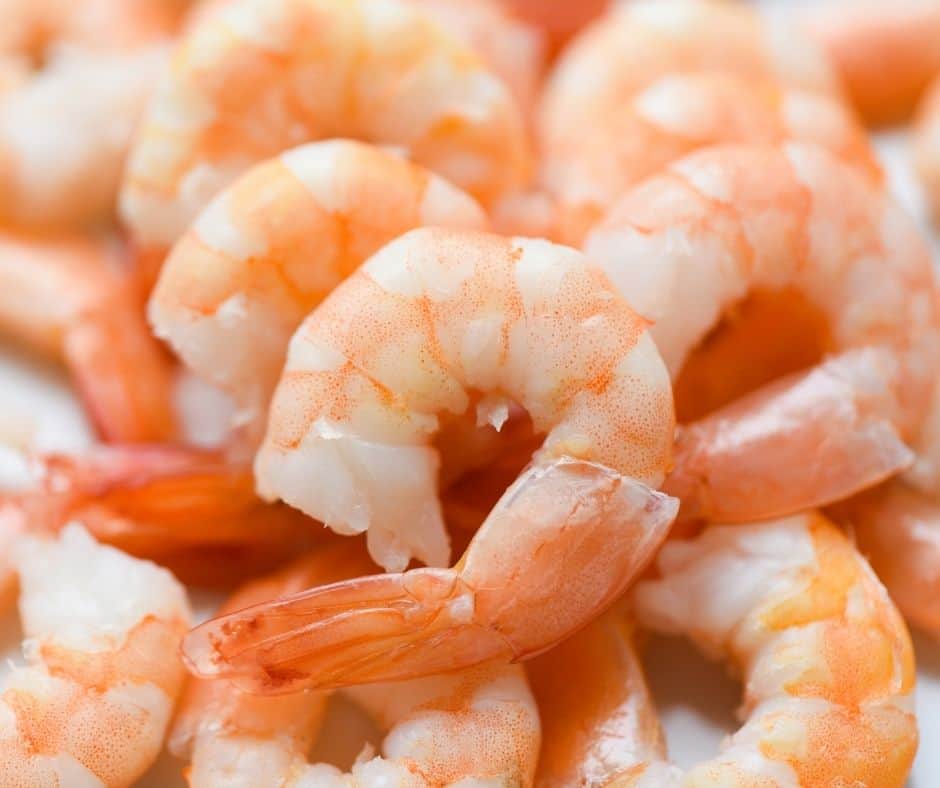
- Shrimp
- Olive Oil
- Lemon Juice
- Salt
- Black Pepper
- Butter
- Minced garlic
- Shallots
- Italian Seasonings
- Egg Yolk
- Panko or Bread Crumbs
For The Full Recipe & Ingredient List, Keep on Scrolling, Until You Get To A Recipe Card Below–
How To Make Air Fryer Baked Shrimp Scampi
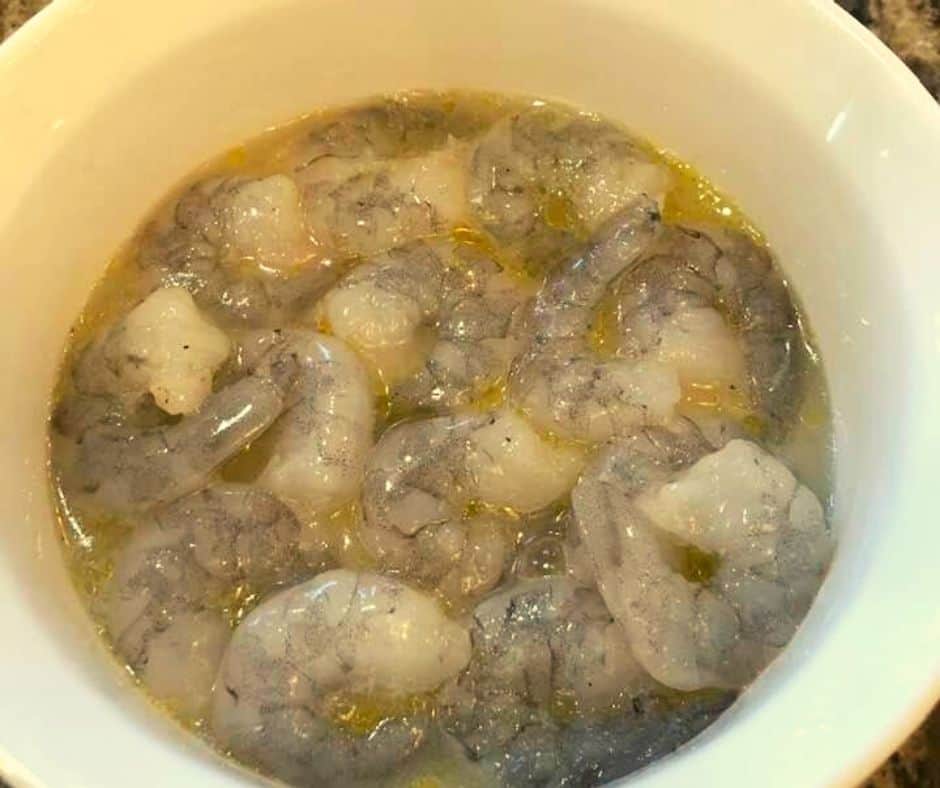
Start by mixing the shrimp, olive oil, lemon juice, salt, and pepper in a small mixing bowl. Then layer the shrimp in a casserole dish.
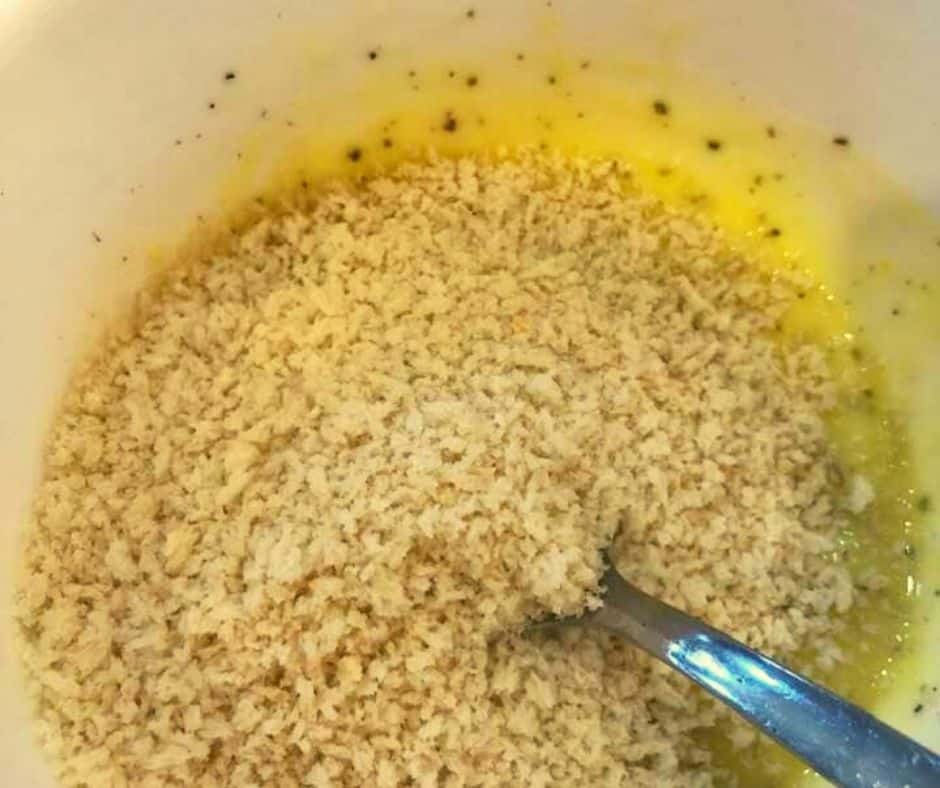
Then, mix the melted butter, garlic, shallots, Italian seasoning, egg yolk, and panko in another mixing bowl. Mix well until all of the panko is incorporated into the mixture.
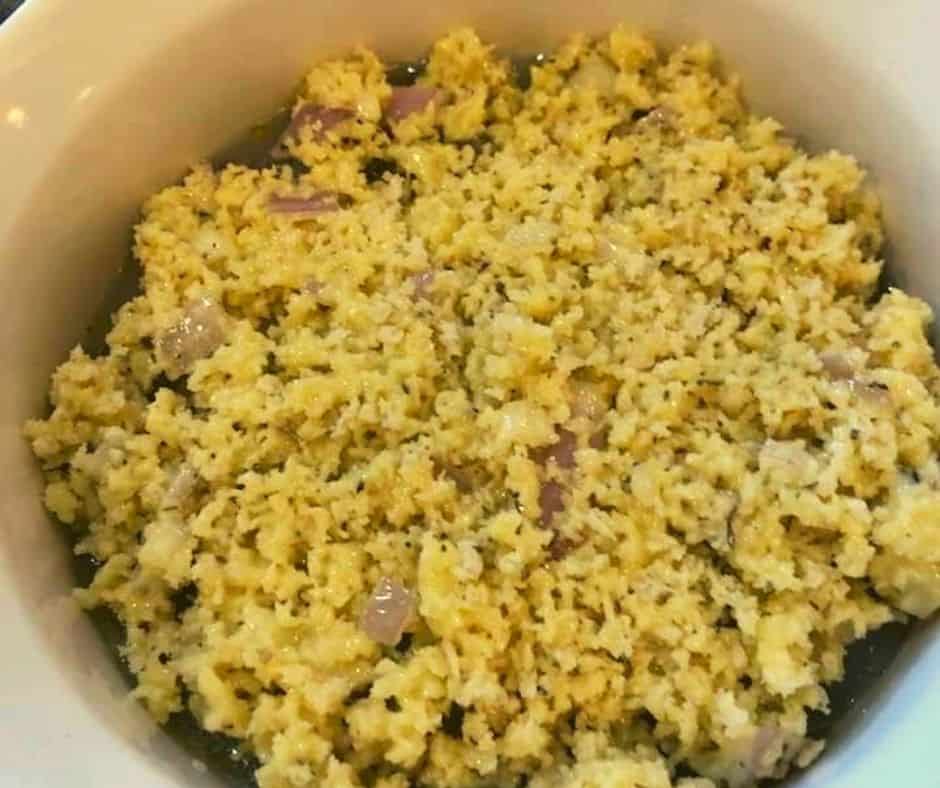
Then spread the panko topping onto the layered shrimp.
Set the casserole dish into the air fryer, at 330 degrees F, (air fryer setting) for 5 minutes.
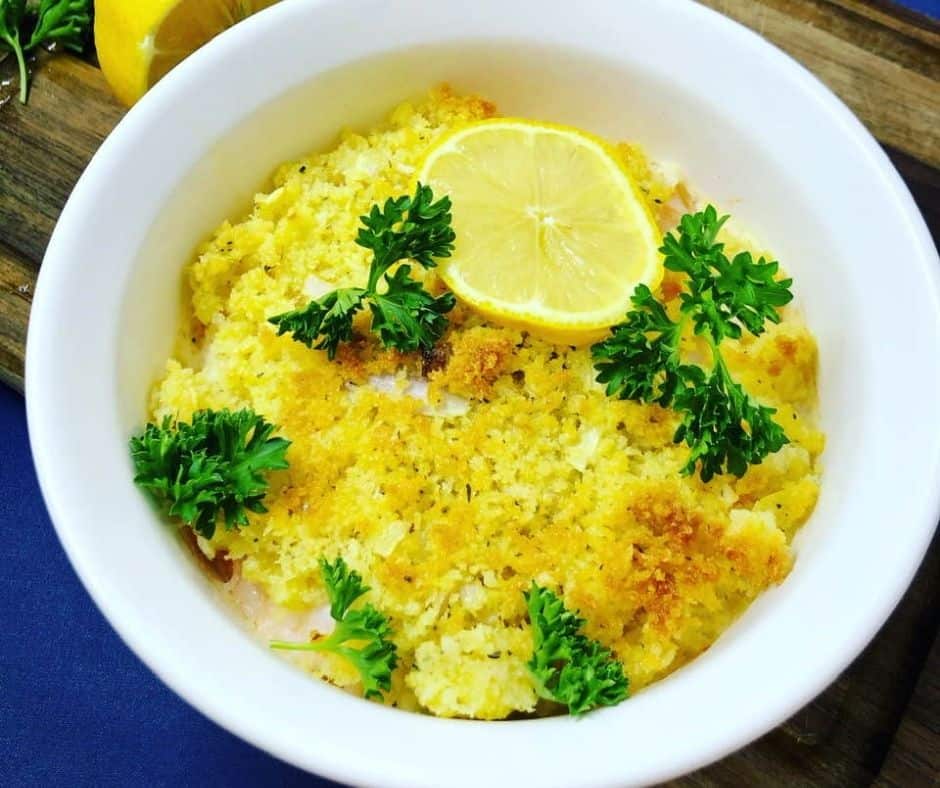
Some Pro Tips:
- If you want to use frozen shrimp, add about 2 to 4 minutes to the cooking time.
- You could easily make this vegan by substituting the butter for vegan butter.
- A thin casserole dish will work best for this; you do not want to use anything too thick. Otherwise, the inside will be raw.
- Season with any fresh herbs right before serving for a great fresh taste.
- You can easily substitute panko for bread crumbs (Italian Seasoned is my recommendation)
How To Store Leftover Shrimp Casserole
If you have any Air Fryer Baked Shrimp Scampi leftover, let it cool to room temperature and then place it into the refrigerator.
It will last between 2 to 3 days.
How do I cook Seapak shrimp scampi in an air fryer?
Preheat the Air Fryer to 390 degrees F, air fryer setting.
Arrange the frozen shrimp into a single layer in the basket, and set the time for 8 to 10 minutes, or until hot.
Can You Cook Frozen Shrimp in The Air Fryer?
Yes, it’s easy to make, and frozen shrimp only takes a few more minutes than fresh shrimp to cook in the air fryer.
Is Shrimp Ok For KETO?
Shrimp is a great food to eat if you are doing KETO or low-carb since there are very few carbs in either shrimp or seafood.
Shrimp only has .2 grams of carbohydrates in 100 grams of cooked shrimp. It’s a great option if you are following a KETO Friendly diet.
What To Serve With Shrimp Scampi
I usually serve this with a either a huge garden salad or Greek Salad.
You can also serve it with a plate of pasta (my kids’ favorite) and it pairs very well with any pasta with clam sauce.
More Air Fryer Recipes
- AIR FRYER CRISPY SHRIMP
- GARLIC PARMESAN AIR-FRIED SHRIMP RECIPE
- AIR FRYER LEMON PEPPER SHRIMP
- AIR FRYER FROZEN COCONUT SHRIMP
Don’t Forget To Pin-
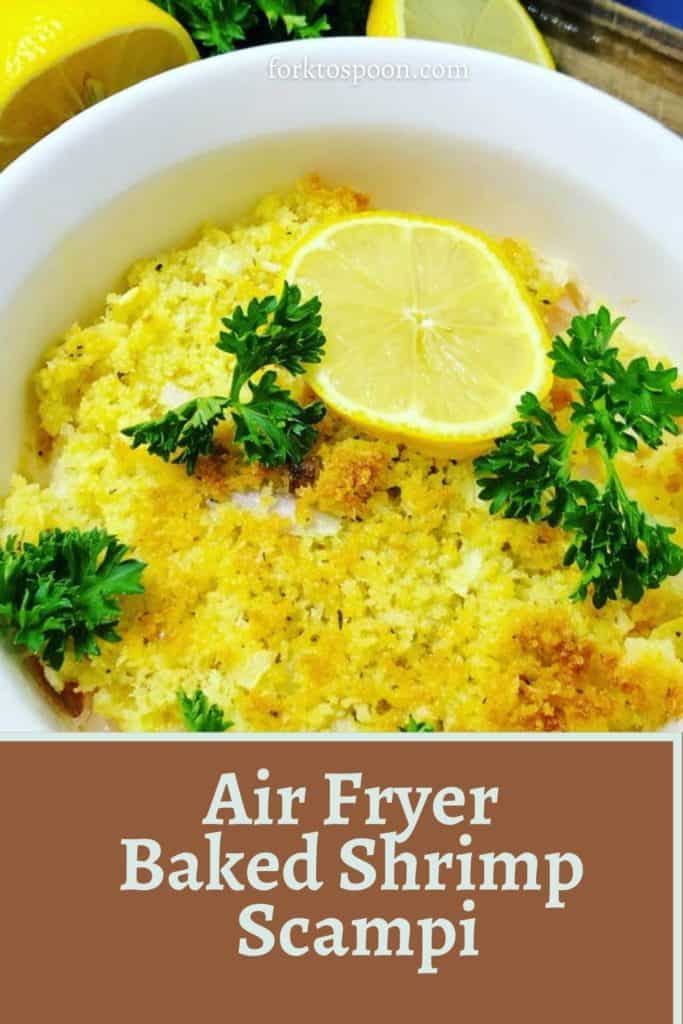
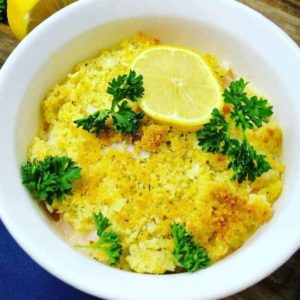
Air Fryer Baked Shrimp Scampi
Description
Ingredients
Shrimp Layer:
- 2 pounds shrimp
- 1 1/2 tablespoons olive oil
- 2 tablespoons lemon juice
- 1 teaspoon salt
- 1/2 teaspoon black pepper
Panko Topping:
- 1/4 cup butter, unsalted and melted
- 2 tablespoons garlic, minced
- 1/3 cup shallots, diced
- 1 tablespoon Italian seasoning
- 1 large egg yolk
- 2/3 cup panko, or breadcrumbs
Instructions
- Start by mixing the shrimp, olive oil, lemon juice, salt, and pepper in a small mixing bowl.
- Then layer the shrimp in a casserole dish (air fryer safe)
- Then, mix the melted butter, garlic, shallots, Italian seasoning, egg yolk, and panko in another mixing bowl.
- Mix well until all of the panko is incorporated into the mixture.
- Then spread the panko topping onto the layered shrimp.
- Set the casserole dish into the air fryer at 330 degrees F (air fryer setting) for 5 minutes.
- Plate, serve and enjoy!
Equipment
- Baking Pan, or Small Casserole Dish, make sure it's oven-safe
Nutrition
Share this recipe
We can’t wait to see what you’ve made! Mention @forktospoon or tag #forktospoon!

